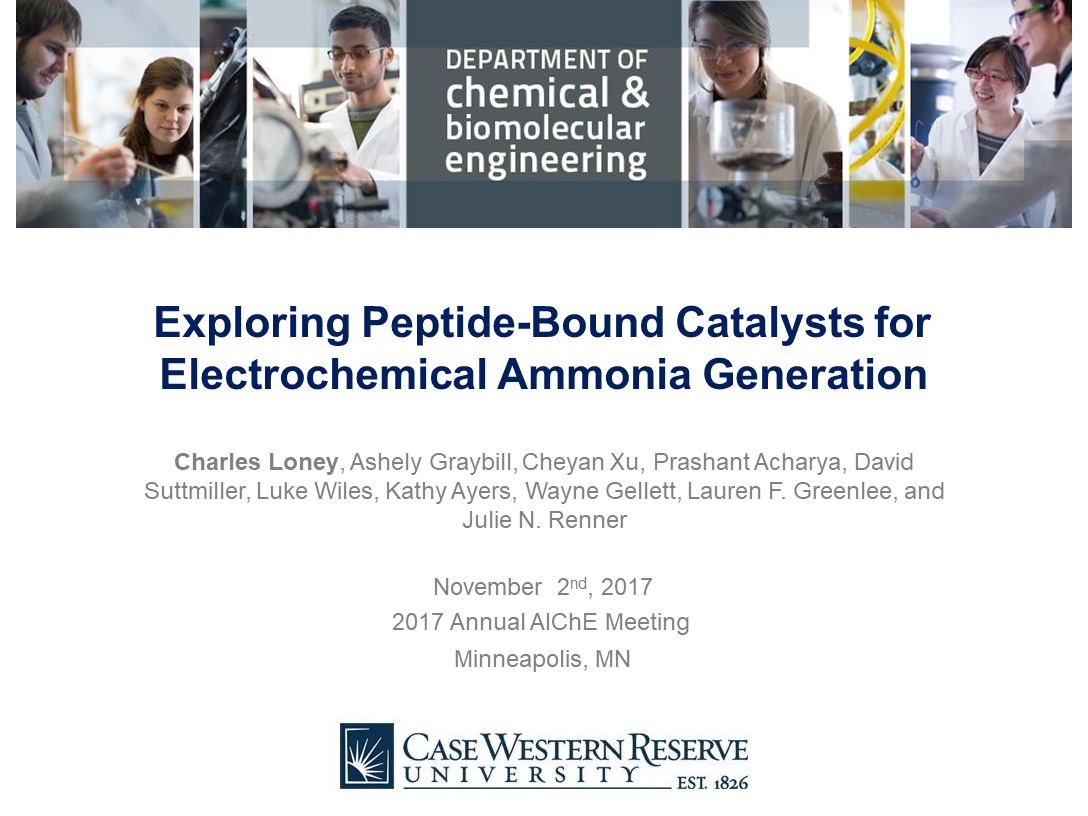Presentation
Exploring Peptide-Bound Catalysts for Electrochemical Ammonia Generation
Today, most ammonia (NH3) manufacturing occurs via the Haber-Bosch process. This process consumes hydrogen from fossil fuels, and as a result NH3 contributes the highest amount of greenhouse gas emissions out of the top 18 large-volume chemicals made globally. Because the process is high temperature (400°–500°C) and pressure (150–300 atm) with a low (15%) single-pass conversion efficiency, the plants have to be very large to be economical. This means that ammonia is shipped from centralized locations, further increasing greenhouse gas emissions because of the fuel consumed in transportation. Additionally, their large size makes it difficult to integrate with renewable sources…

